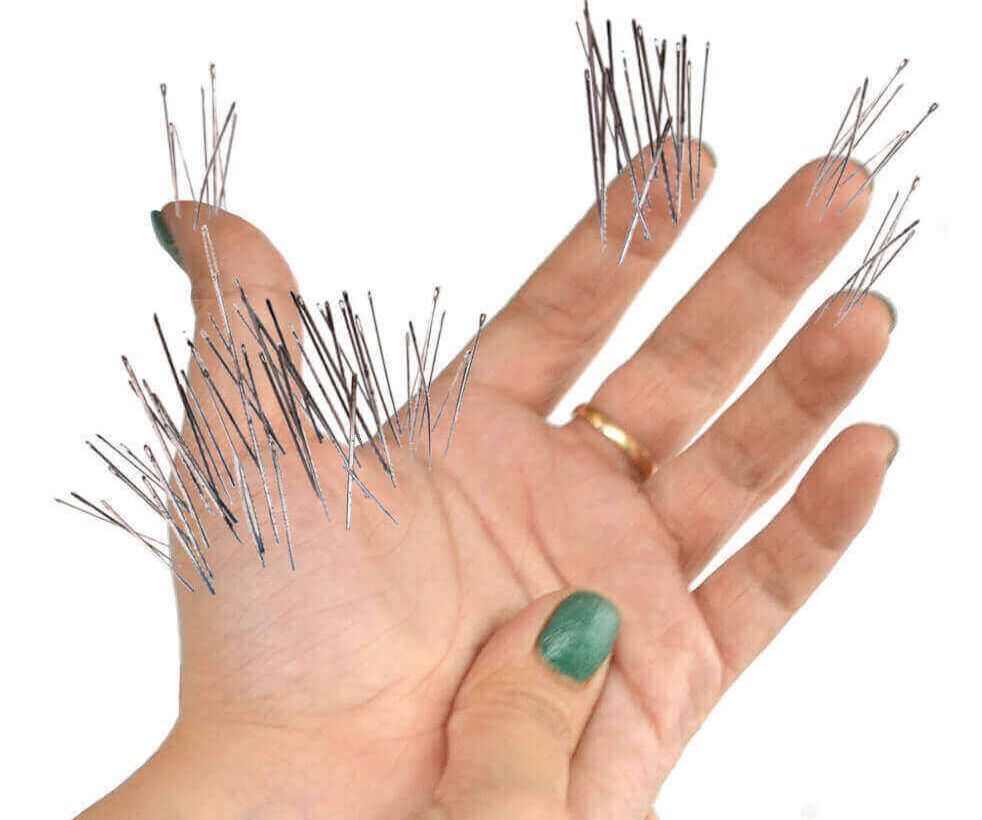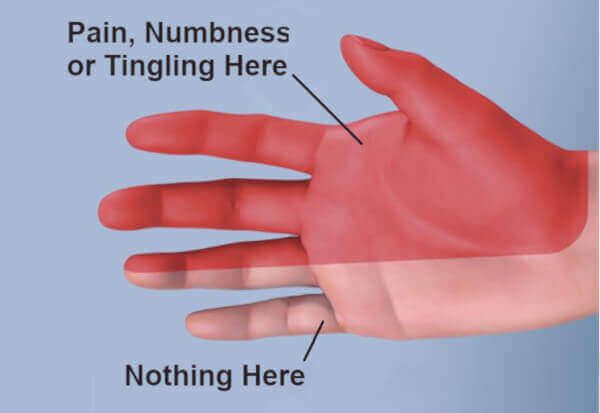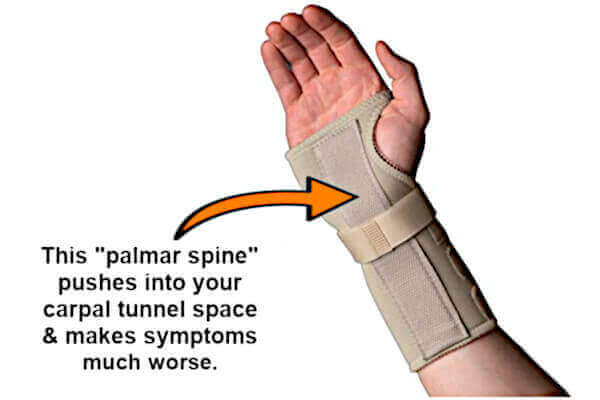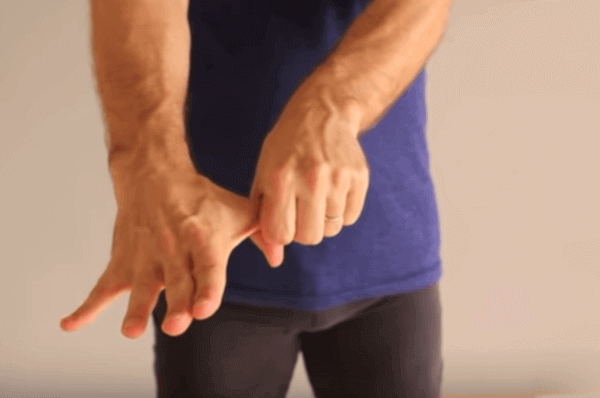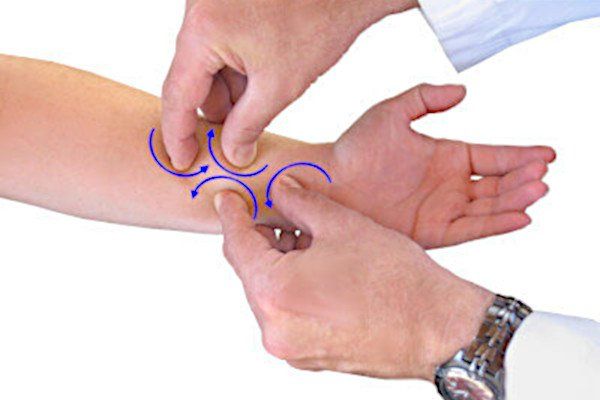What Carpal Tunnel Syndrome Feels Like
Most people have only a rough idea of what carpal tunnel syndrome feels like. The aim of this article is to 1) estimate your chances of getting this condition, 2) describe the sensations you'll experience, and 3) show you the steps needed to get rid of it.
What is carpal tunnel syndrome?
How you get carpal tunnel syndrome
Carpal tunnel syndrome (usually just called "carpal tunnel") is a nerve disorder. The nerve involved is one of the main nerves of the hand called the
median nerve. This nerve becomes damaged under certain conditions.
Chief among those conditions is when you repetitively strain your hand and fingers. This usually happens
on the job, and the most high risk jobs are listed below. In fact, the CDC says it's on the job where most workers develop a
repetitive stress injury or RSI.
An RSI means the tendons in your forearm (which are responsible for curling your fingers) are damaged. That damage makes them inflame and swell.
As the tendons swell, they push on the median nerve. With enough swelling, eventually the nerve is crushed. That crushing causes all the terrible sensations of carpal tunnel syndrome. They're called the
symptoms of carpal tunnel syndrome.
It's important to note that repetitive stress is the
most common way to get carpal tunnel syndrome. But it's not the only way. You can be at high risk for a number of
other reasons
which are also listed below.
What carpal tunnel syndrome feels like (symptoms)
Most people want to know what carpal tunnel syndrome feels like so they can recognize if they have it or not. Actually, it causes very specific feelings or "symptoms" that are easy to spot.
Symptoms are usually confined to the hand or fingers. Sometimes these sensations can spread from the hand to the forearm. They include:
- numbness
- pain
- tingling
- soreness
- itching
- burning
- weakness
The illustration below shows where these sensations occur. Most times, these sensations are more intense in the thumb (including its fleshy base) and first finger. The little finger (pinky finger) is never involved.
In the beginning, carpal tunnel sensations only appear when you're trying to sleep. You feel the need to wake up and shake out the numbness. Some people have to hang their hand off the bed to get relief.
As the condition progresses, these symptoms last into the daytime. Pain can shoot up the arm, especially when gripping something like a soda can.
Driving a car or holding a phone to your ear can make your
hand go numb. Patients often find it difficult to open jars, pick up coins, tie a shoelace or button a shirt.
In time, the condition progresses further - and the symptoms become
severe. You begin to loose sensitivity to hot or cold in your fingertips. The hand becomes increasingly
weaker. Daytime pain becomes crushing and excruciating. The numbness can be so intense that most people say,
"I feel like cutting my hand off!"
You can perform a quick and simple self-test to determine if you have carpal tunnel syndrome by
clicking on this tool.
Who gets carpal tunnel?
High risk jobs
The short answer to "Who gets carpal tunnel?" is "Anybody who works with their hands." That means just about everybody. But certain
occupations are known for causing repetitive stress on the hands, which leads to a higher probability of developing carpal tunnel syndrome. These high risk occupations are:
Other high risks
Aside from high risk jobs, you also increase
the chances of getting carpal tunnel syndrome if you have the following issues. Most are difficult if not impossible to eliminate. They are:
Ways to treat carpal tunnel
Now that you understand what carpal tunnel is all about, you must treat it. If you don't, you're rolling the dice.
Mild cases
of carpal tunnel syndrome will usually resolve on their own with little or no therapy (about
20-60% of the time).
In contrast,
moderate and severe cases of carpal tunnel syndrome will almost never resolve on their own without some treatment. That means your choices are simple: immediate treatment or allowing the condition to worsen.
There are 2 primary ways to treat carpal tunnel syndrome:
- carpal tunnel (hand) surgery
- non-surgical treatments
Obviously, these two ways are radically different. Most doctors (including the
American Academy of Orthopedic Surgeons) recommend using
nonsurgical therapies first, before considering surgery. The reason is simple. Nonsurgical remedies have a 90% effectiveness rate in most carpal tunnel patients.
Hand surgery is usually reserved only for the most extreme and intense cases of carpal tunnel syndrome, especially when all nonsurgical remedies have failed. And even then, carpal tunnel surgery is only about
50% successful (depending on initial severity).
Carpal tunnel surgery
Nonsurgical remedies
The 5 key ways to treat carpal tunnel syndrome
without
surgery are:
- Steroid shots
- Rest and avoidance
- Night bracing
- Stretching exercises
- Myofascial release massage
It's usually best to try remedies 2-5 first. If they are not successful, then steroid shots can be tried.
Also, remedies 2-5 should be used
concurrently. In other words, use them
simultaneously
instead of one at a time. This will assure maximum benefit
1. Steroid shots
2. Rest and aoidance
3. Night bracing
4. Stretching exercises
5. Myofascial release massage
Conclusion
Knowing what carpal tunnel syndrome feels like could be your "early warning sign". Such an alert can help you get started on treatment now, instead of later on when the condition has advanced.


